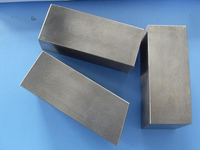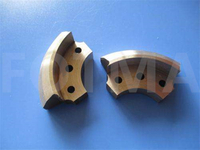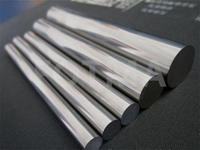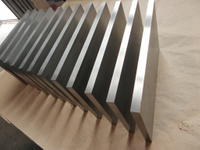Views: 6 Author: Site Editor Publish Time: 2010-07-29 Origin: Site
Cutbacks by major producers, combined with stockpiling in China, resulted in a tightening of supply, causing prices to spike in mid 2009. Between July 2009 and August 2009, prices for both molybdic oxide and ferromolybdenum almost doubled, only to drop by 50% in the next two months.
From November 2009, in line with the general trend in commodity prices, molybdenum prices have increased, reaching US$15/lbMo by January 2010, an increase of almost 50%. Nevertheless, with demand expected to rebound in 2010, prices could consolidate at current levels.
China to continue driving molybdenum demand
In 2009, molybdenum consumption is estimated to have declined by as much as 9%, as end-users curtailed their requirements. Although consumption has declined on a global level, emerging markets such as China have seen demand continue to increase in 2009. Chinese consumption is estimated to have risen by around 5% in 2009.
Chinese consumption will continue to outstrip growth in the rest of the world, with an annual average rate of 9%py for the next five years, compared to accumulated growth of 2%py in the developed markets of Europe, the USA and Japan.
Steel to remain dominant end-use for molybdenum
Molybdenum is consumed mainly as oxide or ferromolybdenum in stainless and alloy steels, products for which demand has fallen significantly in the global downturn. Production of stainless steel, which accounts for around 25% of all molybdenum consumption, has declined sharply over the last two years. In 2008, output fell by 7% year-on-year, while the first three quarters of 2009 have seen production of crude stainless steel decline by around 15%, year-on-year.
The fall in production of stainless steel, however, has only taken place in developed economies. Emerging markets such as China and India have seen domestic output continue to rise. The first three quarters of 2009 saw Chinese production up by almost 20% year-on-year, while for the whole year China is forecast to produce 8-9Mt. However, 2010 is expected to see an increase in global demand and production, as world GDP recovers. World production of crude stainless steel is forecast to increase by around 8% in 2010.
After 2010 demand growth is expected to average 4%py, as the various end-uses for molybdenum consume ever larger volumes.
The drive to reduce carbon dioxide emissions from coal-fired power stations will require plants running at higher temperatures, resulting in greater demand for high end molybdenum-bearing steels. The energy market will play an important role in the future, as the growth in nuclear power stations, along with drilling for oil and gas in harsher environments, drives demand for molybdenum containing steels.
Molybdenum shortages could occur
In response to a large withdrawal of demand from the market, molybdenum producers responded with savage cuts. In 2009, global mined molybdenum output is estimated to have declined by 12%, following annual average growth of 5% for the period 2000 to 2008. Surpluses in 2008 and 2009 have been absorbed by stockpiling, mainly in China. In the longer term, molybdenum demand is expected to recover and the market may move into deficit by 2014.
With the decline in prices in late 2008, many new mining projects were slowed or suspended. As there are some forty molybdenum mine projects with combined capacity of about 170ktpy at some level of feasibility assessment, longer term supply appears to be assured.
The only new roasting plant outside China that is likely to be constructed in the short to medium term is that by Molymet at Mejillones in Chile. This will raise world capacity to more than 270ktpy, which is more than sufficient on a global basis, but there still may be localized shortages of roasting capacity.
What will be the likely impact of the LME molybdenum contract?
In February 2010, the London Metal Exchange (LME) will commence futures trading of molybdenum as part of its move to list minor metals on its exchange. The plan to turn molybdenum into an exchange traded commodity has come with mixed reviews. Many producers and consumers have voiced concerns that prices will become more volatile as a result, while others have welcomed the news.
So far Molymet is the only company to register its brands of molybdic oxide, although Jinduicheng Molybdenum, China Molybdenum, and Kwang yang Ferroalloy have also applied for registration.
Regardless of the platform used, molybdenum prices are expected to remain volatile, although following an upward trend. In 2010, prices for oxide are forecast to average US$17/lbMo, rising to above US$20/lbMo in 2011, as strong demand allows producers to increase prices. Further forward, a deficit could appear in the market by 2014, taking prices to US$40/lbMo.
content is empty!





